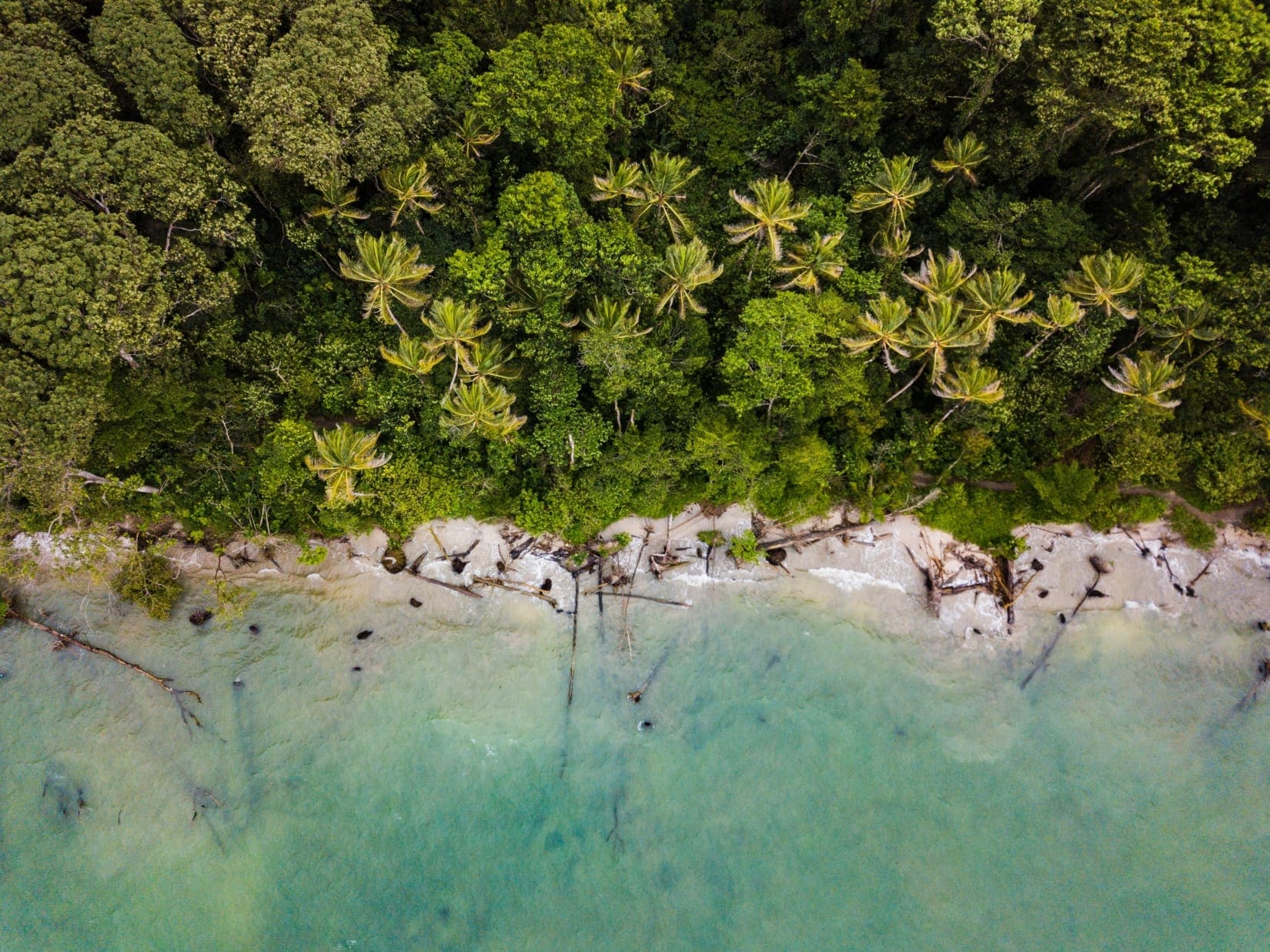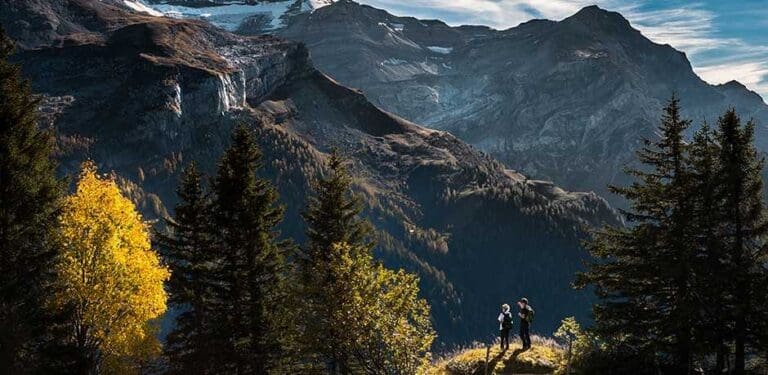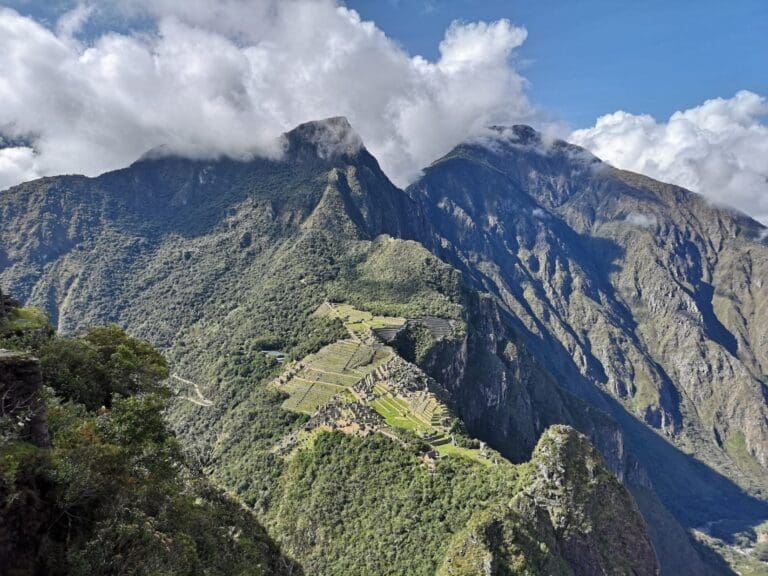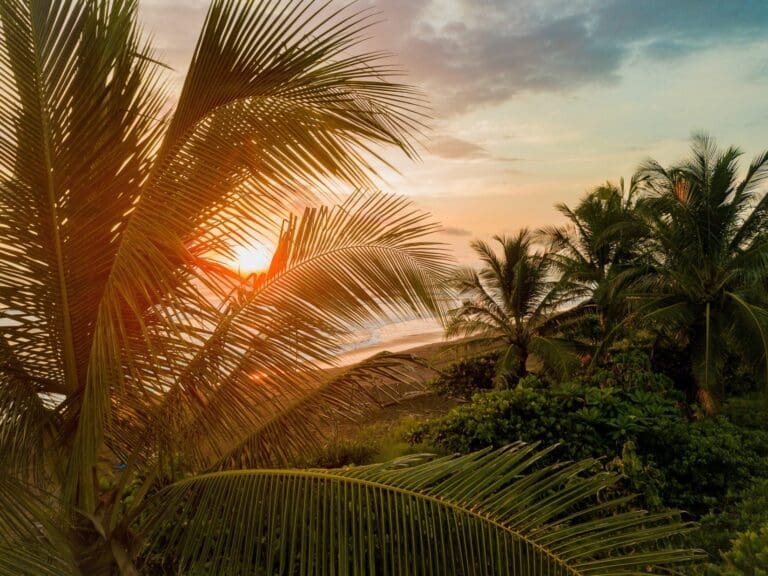The 19 Best Places to Visit in Costa Rica in 2025
Biodiverse and beach-fringed Costa Rica has to be one of the most adventure-rich locations on the planet. Spanning a whole cut-out of Central America, the country ranges from the aquamarine lagoons of the Caribbean Sea to the frothing waves of the Pacific Ocean. Read on to see my choices for some of the best places to visit in Costa Rica.
From soaring volcanoes that sprout through the clouds, primeval rainforests inhabited by howler monkeys and golden frogs, and roaring waterfalls that look like something plucked out of Shangri La, there is something here for yogis, hikers, surfers, wildlife lovers, and more.
This guide to the 19 Best Places to Visit in Costa Rica will only scratch the surface of this enthralling nation. It hops from the wave-washed shores of Guanacaste province to the lush Monteverde cloud forests, and includes the buzzing capital of San José along with long-lost island groups that you can only get to by boat.
Plus, you’ll find tips on how to get to Costa Rica and the best time to go at the end of this post. Enjoy!
1. Guanacaste
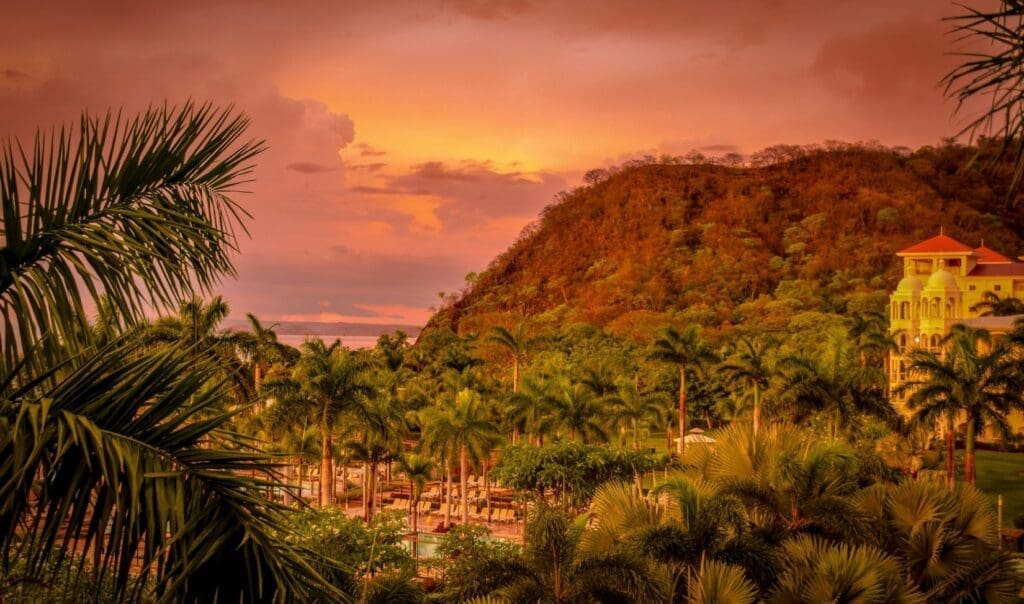
If you’re after something of a more secluded beach destination on the Pacific coast, this awesome Guanacaste tour should be on the radar. It’s actually a whole province, bending like a curled thumb from the Costa Rica-Nicaragua border over the Gulf of Nicoya. Its western side is where the action is, especially in the 40-mile (64-kilometer) run of sparkling sands and lagoons and palm-threaded beaches between Tamarindo (a major beginner surf spot) and Samara.
The northern part of Guanacaste is home to the Santa Rosa National Park. Go there to explore empty wisps of golden sand, mangrove forests, and broadleaf woodlands that swing with rare capuchin monkeys. Adventures await inland, too, especially as Guanacaste has established itself as something of a ziplining mecca – kids will love the Monkey Jungle Zip Line near Tamarindo, but there are plenty more hardcore ones to boot.
For a truly rejuvenating experience, don’t miss the hot springs near the Rincón de la Vieja Volcano. These natural thermal pools are heated by geothermal activity beneath the volcano, offering a perfect way to relax after a day of adventure. These springs provide a soothing escape with scenic views of the surrounding wilderness.
Back on the coast and there’s so much to get through. Hammock-swinging days meet snorkeling and sunset sailing expeditions in chilled Playa Hermosa. You can watch the turtle hatching season on Playa Grande. And there’s more surfing than you can shake an ecotourism handbook at – consider Nosara, Tamarindo, and Playa Guiones for some of the best waves. Check out more details of this coastal paradise in our Ultimate Travel Guide to Guanacaste.
2. Islas Murciélagos (Bat Islands)

There’s one main reason that the Islas Murciélagos (also known as the Bat Islands), make it onto this list of Best Places to Visit in Costa Rica: Diving. Yep, the scuba here is some of the best in the country – nay, the world! Visibility can extend up to a whopping 98 feet (30 meters) when the currents and the weather align, and there’s such a plethora of bucket-list dive sites that even the most seasoned PADI maestro won’t get bored.
They include the ominously named Big Scare, where there’s a fantastic chance that you’ll be going under in the company of bull sharks. Rugged Bajo Negro, a submerged wedge of lava stone that’s usually replete with spadefish, moray eels, and massive octopi, is also a wonderful option. However, the marine safari really starts from the moment you hop on the boat at Playa del Coco, because spinner dolphins and whales occupy the straits between the mainland and the islands.
The Islas Murciélagos are actually a part of the larger Santa Rosa National Park in Guanacaste Province. A string of remote isles that poke out into the Pacific Ocean from the north-western tip of Costa Rica, they can be tricky to get to but reward water babies with virtually empty coral gardens and volcanic reef systems. Most people will stick to the ocean, but you can hike a single trail on the largest of the islands – Isla San José. It’s a short two-mile (three-kilometer) back and forth to a ranger station and lookout point.
3. Tamarindo Beach
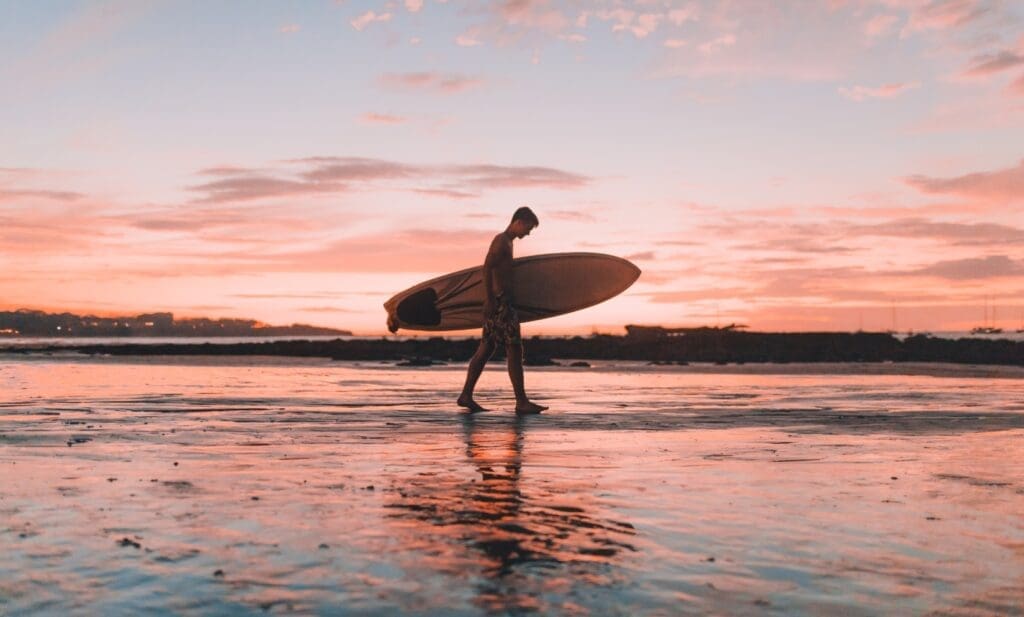
Enfolded by two rocky headlands and a long sliver of shimmering sand midway down the Guanacaste shoreline, Playa Tamarindo has risen and risen to become arguably the most famous surf town in Costa Rica, making it one of the Best Places to Visit in Costa Rica. But don’t just take our word for it. You can experience it for yourself on this thrilling Guanacaste vacation tour.
It was first found by board riders in the 1970s but has boomed in recent years. Now, you get rollicking bars and pubs and all sorts of slick hotels nestled between the coast palms.
The surf is still epic, though. There’s something for all levels, too, from the shifting sandbars of the Estero River to the mellow point break for starters at Capitan Suizo. Of course, Tamarindo also has a seemingly endless supply of surf hostels, surf camps, surf schools – you name it. It’s like Central America’s answer to Kuta, Bali.
When the waves are off (not often), the focus will shift to Tamarindo’s other draws. The main one is the Marino las Baulas National Park, which exists in patches to the north, south, and east of the center. It includes the likes of Playa Grande, which hosts thousands of nesting leatherback sea turtles between October and March. There’s also the Catalina Islands archipelago, with super-clear waters and resident manta rays some 10 miles (16 kilometers) offshore – one for the scuba folk!
4. Arenal

Arenal Volcano is the centerpiece of Arenal, the self-proclaimed adventure capital of Costa Rica. Soaring to a whopping 5,436 feet (1,656 meters) above sea level in the heart of the northern cordillera, the Arenal Volcano is a perfectly cone-shaped mountain that once erupted more than 41 times each day! Don’t worry…it’s now dormant, but you still can’t hike to the peak because of all the geothermal activity. Instead, delve into the verdant lands of the Arenal Volcano National Park that surround the mountain – you won’t be bored!
Perhaps you could begin with a hike to the crashing La Fortuna Waterfall? There, the H2O plummets more than 240 feet (73 meters) from a black-rock mountain into a turquoise pool hidden in the jungles. Alternatively, there’s gnarly whitewater rafting to be had on the Peñas Blancas River, or spelunking in the deep Venado Caves – they pierce a disconcerting 8,850 feet (2,697 meters) below ground.
On the far side of Arenal itself is vast Lake Arenal. It’s the largest lake in Costa Rica and now a haven for outdoorsy activities. Ziplines lurk in the peaks above it. There are hot springs near Tabacon just to the north. Meanwhile, SUP boarding and kayaking and wild swimming are all popular on the water itself.
Ready for a thrilling getaway? Book your Arenal tour for a vacation you won’t soon forget!
5. Monteverde
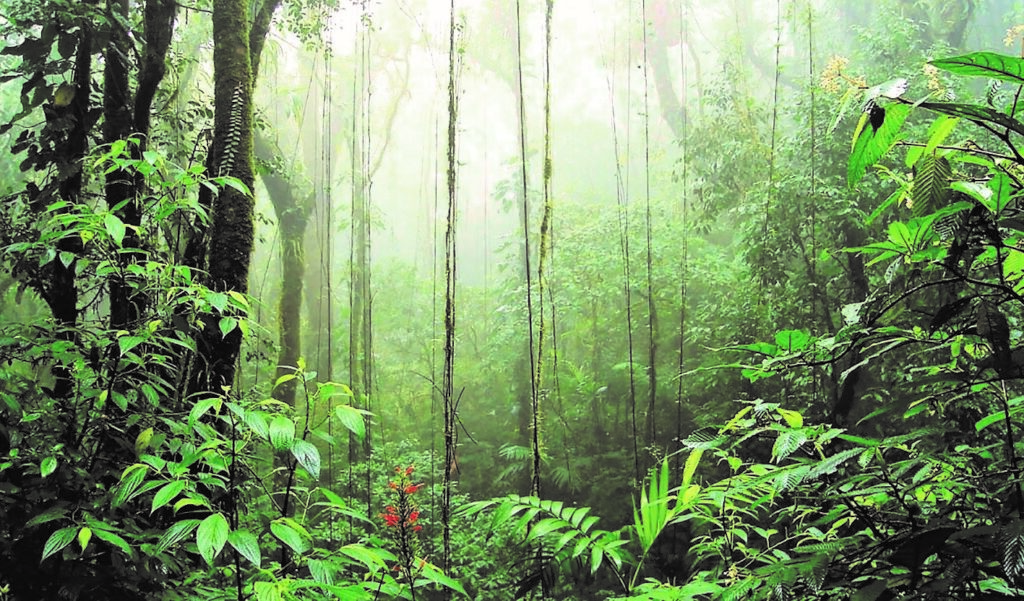
Some say that Monteverde single handedly brought ecotourism to Costa Rica, and is high on the list of our Best Places to Visit in Costa Rica. True or not, this is the place to go to get out and about in the tropical wilds of this very wild land.
Perched on high in the misty midst of the Cordillera de Tilarán, it covers a vast swathe of over 20 square miles (53 square kilometers) in all. Within are countless nature reserves and protected forest areas, which draw a continual stream of hikers, wildlife spotters, and adventurers.
The place that 100% cannot be missed is the epic Monteverde Cloud Forest Reserve. Visitors there get to delve into some of the most biodiverse patches of primeval jungle left on the planet. It’s all linked up by well-maintained trails that hit a zenith with that 492-foot-long (150-meter) suspension bridge that cuts straight through the canopy. Keep your eyes peeled for glimpses of the proud resplendent quetzal (the multicolored national bird of Guatemala) and the uber-rare golden toad as you hike there!
Accommodations in these parts are usually eco-friendly in the extreme. We’re talking places like the Monteverde Cloud Forest Lodge, a series of timber-built cabanas with decks that gaze out over the strangler trees and flowerbeds close to the backpacker hub of Santa Elena. From there, you can also plan adrenaline-filled jaunts through the greater region, from whitewater rafting to canyoneering to horseback outings.
Here are some other Top Things to Know Before Visiting Monteverde.
6. Poás Volcano

The Poás Volcano looms large over the Central Valley of Costa Rica. You can almost see it from the streets of San José, shouldering 8,848 feet (2,697 meters) over the heights of the sierras in the distance.
It’s actually one of the most active volcanoes in Central America, with a busy eruption schedule over the last decade consisting of eruptions in 2017 and then again in 2019. At the time of writing, the Poás Volcano National Park that surrounds the peak is once again open to visitors, though access to some trails and viewing decks might be limited.
Is it still worth the trip? You bet it is! This is your chance to peer directly over the top of not one but two colossal volcanic calderas. You’ll also be able to gaze at the unique crater lakes, from inky blue Lake Botos (Laguna Botos) to the acidic milky waters of the Hot Lagoon (Laguna Caliente) atop the main volcano.
Visit our Custom Travel page to learn about how we can help create your dream adventure to Costa Rica!
7. Tortuguero
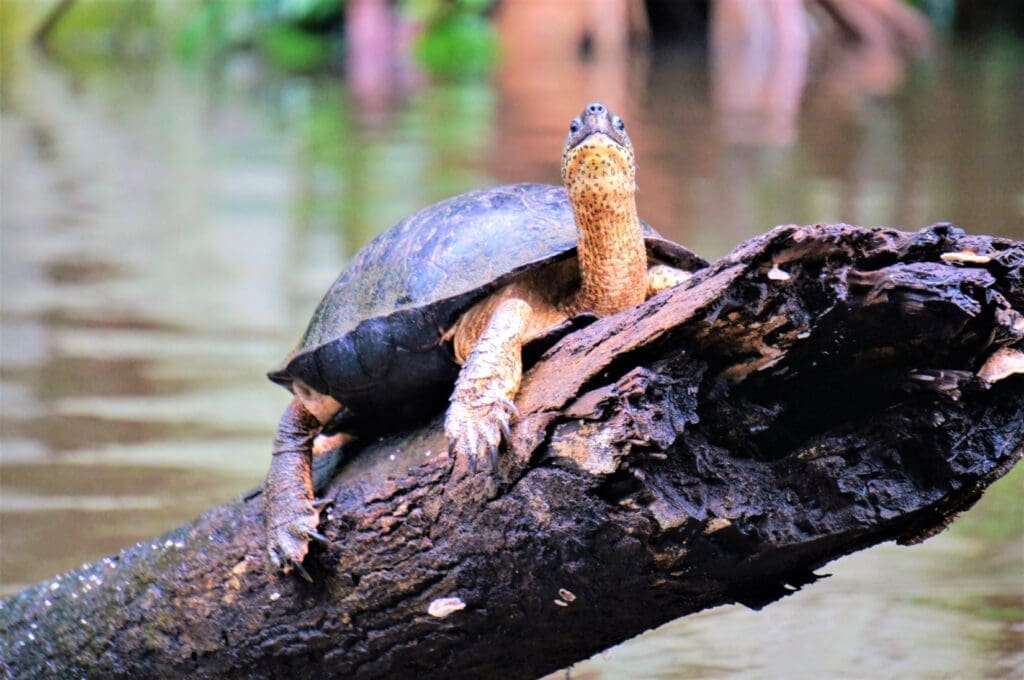
North, south, east, west – wherever you look around little Tortuguero is a national park. That’s the beauty of this remote and isolated spot on the edge of the Caribbean Sea in northern Costa Rica. Just as the name implies, it’s mainly known for its resident population of sea turtles…
They’re still the top draw attraction. Thousands of visitors come to watch green sea turtles, leatherbacks, and hawksbill turtles crawl from the ocean to build their nests between July and October (August is the best of the lot). It’s an experience you’re not likely to forget in a hurry. Turtle safaris to the nearby beaches typically take place in the thick of the night, with the stars blazing overhead and the moon glinting on the Caribbean Sea. Lucky groups will even get to see the first baby hatchlings make their way back from the beach into the water.
Aside from the turtles, Tortuguero is also a perfect gateway to the wetlands and creeks of the Tortuguero National Park. It extends nearly 10 miles (16 kilometers) into the hills and rainforests behind the town itself, unfolding in a feral patchwork of caiman-filled waterways where you can canoe and kayak through truly untouched landscapes.
Book your Tortuguero trip for an unforgettable adventure that’s perfect for families, travel companions, or exploring by yourself!
8. Santa Teresa
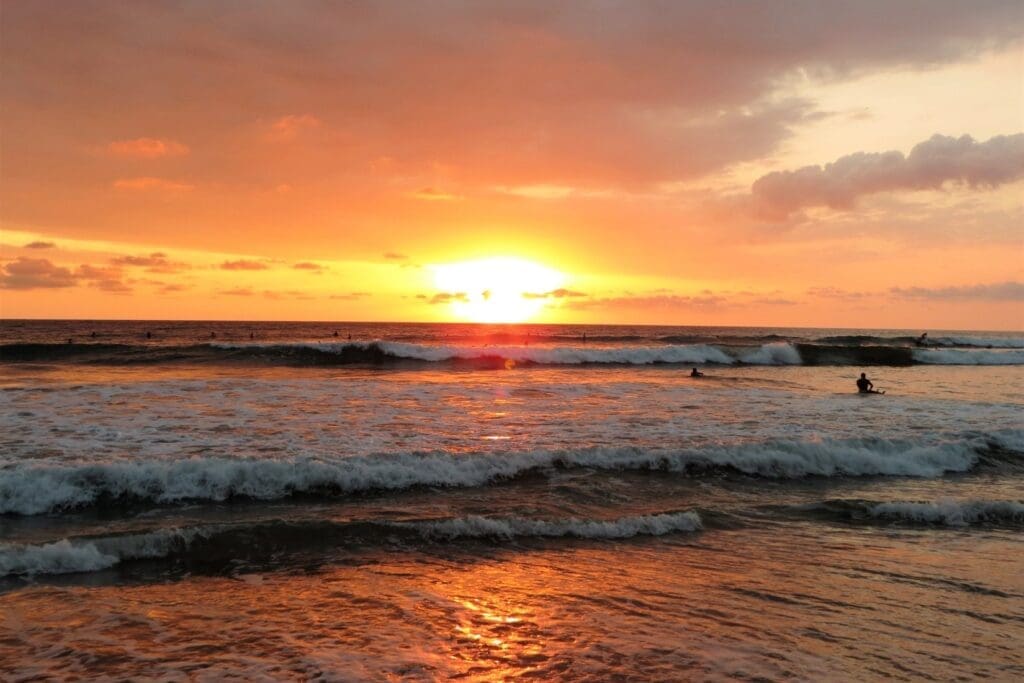
Santa Teresa is bathed in the salty airs that roll off the Pacific Ocean at the tail end of the Nicoya Peninsula. One of the last of a whole string of surf towns in the region, it might just be the cream of the crop…
Yep, a trio of fantastic beach breaks join up here. In total, they roll for over six miles (over nine kilometers), starting with beginner-friendly Playa Hermosa in the north and ending with the hollow point breaks of Mal Pais down south. There’s surfing for all levels in Santa Teresa, but it’s a true intermediate mecca, with regular, rippable A-frame waves of five-plus foot throughout the summer months.
You don’t have to wax down the board to enjoy Santa Teresa, though. The town in Santa Teresa has also risen to become something of a buzzy nightlife spot. International DJs can often be spotted around New Year and at Christmas, and there are pumping disco clubs like La Lora for those post-surf après sessions. Behind town, the jungles take over pretty quick. If you’ve managed to dodge a hangover, head up into the trails there to discover the plunge pools and gushing cataracts around the Montezuma Waterfall.
9. Tortuga Island
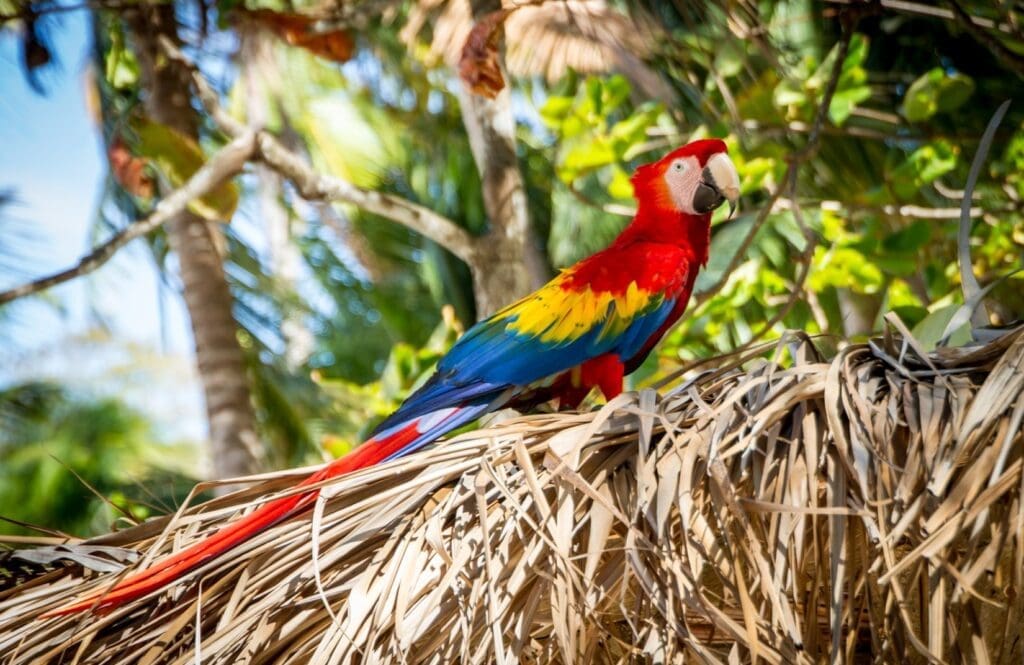
There’s an air of the Thai islands about little Tortuga. Fragmented off the south side of the Nicoya Peninsula, a 90-minute boat trip out of Puntarenas, it draws thousands of city slickers from big San José with the promise of powdery white beaches framed by jungle-topped rocks that lurch straight out of the Pacific. Idyllic is the keyword.
Tortuga is surrounded by some seriously immersive ocean territory. Scuba aficionados and snorkelers will have loads to chose from. There’s the El Aquario reef, which teems with rainbowfish and angelfish and stingrays and all manner of strange underwater corals. You’ve got the Bye Bye Reef and its colossal submerged volcanic rocks, a favorite hangout for sea turtles and manta rays. Then there’s the Caroline Star shipwreck, where you can go to encounter formidable, white-tipped reef sharks.
When you’re done exploring the seas and soaking up the rays on the sand, there’s more fun to be had in the forested hills behind. Tortuga boasts its very own zipline course, along with some challenging jungle hikes that have lookout points over the tops of the canopies. Up there, it’s possible to meet colorful scarlet macaws, tapirs, strange iguanas and much, much more. View this amazing Classic Costa Rica tour for more details.
10. San José
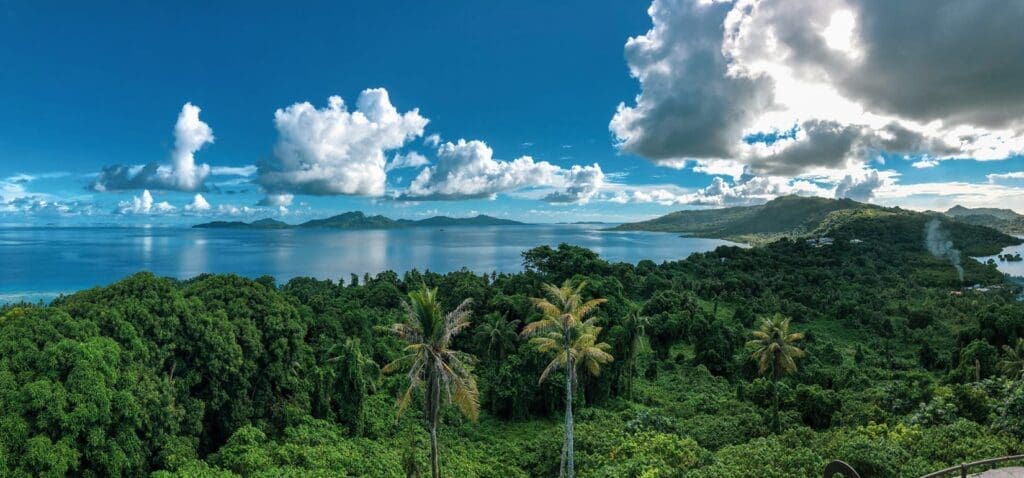
It’s very likely that San José will be the first place you encounter in Costa Rica after stepping off the plane. Most travelers won’t linger too long. Myriad eco draws are on the doorstep, you see, from the smoking Poás Volcano and its turquoise caldera lake to the paradisiacal La Paz waterfall gardens. But choose to stay put just a few days and this buzzy and energetic town can really leave a mark.
Avenida Central is the beating heart of it all. That long boulevard bisects the city, connecting up all the key neighborhoods, from vibrant Central Market (go there on Saturday mornings to shop for strange tropical fruits and aromatic coffee beans) to the Cultural Plaza (the proud home of the Pre-Columbian Gold Museum and its glimmering relics from ages long gone).
One of the best things to do in the sprawling capital is to make for the lush hills of Escazu district and its surroundings. They rise immediately to the west of the center, scrambling up the cloud-topped peaks that mark the start of the Costa Rican backcountry. A couple of fantastic restaurants – Ram Luna, Tiquicia – offer traditional Tican cooking in those parts, which means gallo pinto and tamales with a view of the capital unfolding to the horizon.
11. Jaco Beach

Jaco is probably about as close as it’s possible to get to a full-on beach resort in Costa Rica. Bursting with big hotels, beer-sloshing backpacker bars, and fast-food outlets, it’s not at all like the rest of the country. But there’s some charm in these gritty streets, between the ramshackle hostels and salt-washed beach bars by the Pacific.
What really put Jaco on the map to begin with is its surfing. It’s great for complete beginners, because the two-mile (three-kilometer) beach here has forgiving and consistent shoulder-height waves that break over soft sand. Playa Hermosa – the first official World Surfing Reserve in Central America – takes care of more advanced riders. It’s just to the south of town and comes replete with glassy left-handers and A-frames, but you’ll need to watch out for the rips.
Fantastic beaches abound close to Jaco. Playa Blanca offers a rare stretch of white sand on this side of Costa Rica, backed by clusters of sea grapes and stooping coconut palms. Playa Herradura is another standout. Located just over 10 minutes’ drive north of Jaco proper, it opens into a huge horseshoe bay with a shallow bottom and azure waters that lap against cinnamon-tinged powder. And when it’s time for that adrenaline fix? Treks to the Nauyaca Waterfalls or high-octane ATV tours through the coast forests can be added to the menu too.
12. Manuel Antonio
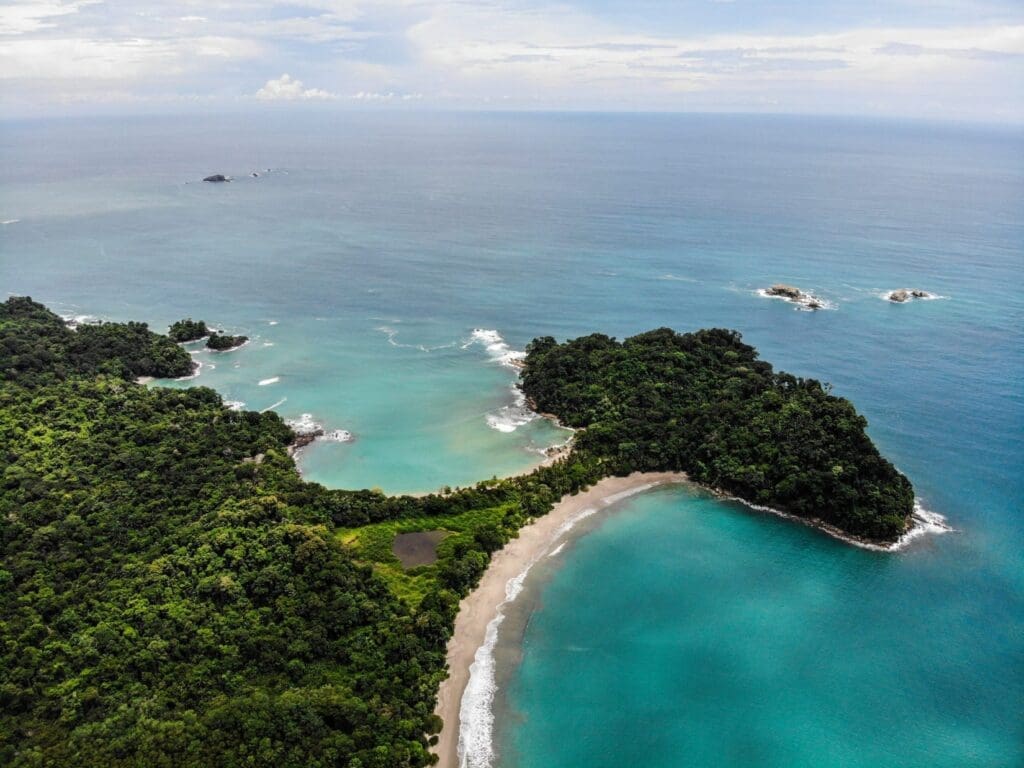
Huddled between the lush rainforests roughly midway down the Costa Rican Pacific coast, Manuel Antonio is one of the leading eco-tourism hotspots in the country (and that’s saying something – this is Costa Rica, remember?). Manuel Antonio is mainly famed for what’s right on the doorstep: The Manuel Antonio National Park. At just 4,900 acres (1,983 hectares), Manuel Antonio National Park is the smallest reserve in the country. But boy does it pack a punch… Come to see swinging howler monkeys, scurrying red-backed squirrel monkeys, basilisks, capuchins, and – who could forget – the famously lazy two-toed sloth.
The village of Manuel Antonio sits just to the north of the main entrance to the park. It’s now a bustling and vibrant place, complete with sport-fishing outfitters (elusive sailfish inhabit these waters, you know), zip-line courses, and hiking guides. The hotels in Manuel Antonio aren’t allowed near the coast due to conservation regulations, but that’s a gift in disguise – they stud the cliff tops instead, offering sweeping panoramas of the wave-smashed shoreline.
Talking of waves, plenty of good-quality breaks roll into the beach at Espadilla Sur to the south of the village. In fact, you’ll find peaks for beginners and advanced surfers alike, with both lefts and rights on the menu. There’s also snorkeling offer around the rugged coves of Playa Biesanz, and sunset lookout points at the end of the steep one-mile (1.6-kilometer) trek to Punta Catedral.
Click for more Manuel Antonio tour details and book your dream vacation with The Explorer’s Passage – an industry award-winning premier adventure travel company.
13. Chirripó National Park

There is no higher point in all of the mountain-carved, volcano-spotted Costa Rica – than Mount Chirripó. The peak rises a mega 12,536 feet (3,821 meters) above sea level in the midst of the Cordillera de Salamanca range just south of San José. Today, it’s the centerpiece of its namesake national park and is noted for its incredible biodiversity and range of medium- and high-altitude habitats.
The piece de resistance of the reserve is surely the hike to the summit itself. That usually takes two or three full days, including transfers from the capital. It’s a 23-mile (37 kilometer) loop path that starts on a rough trail through primeval rainforests and then emerges into the strange world of the Talamanca páramo, a rare climactic zone that has tussock ridges and hardy plants that look like they’ve been plucked off another planet.
Sightings of stunning quetzal birds and endangered monkey species are all part and parcel of a trip to the Chirripó National Park. So, too, are potential views of both the Pacific Ocean to the west and the Caribbean Sea to the east, though those depend on getting the clearest of days and making a successful attempt at the summit of Mount Chirripó.
14. Uvita
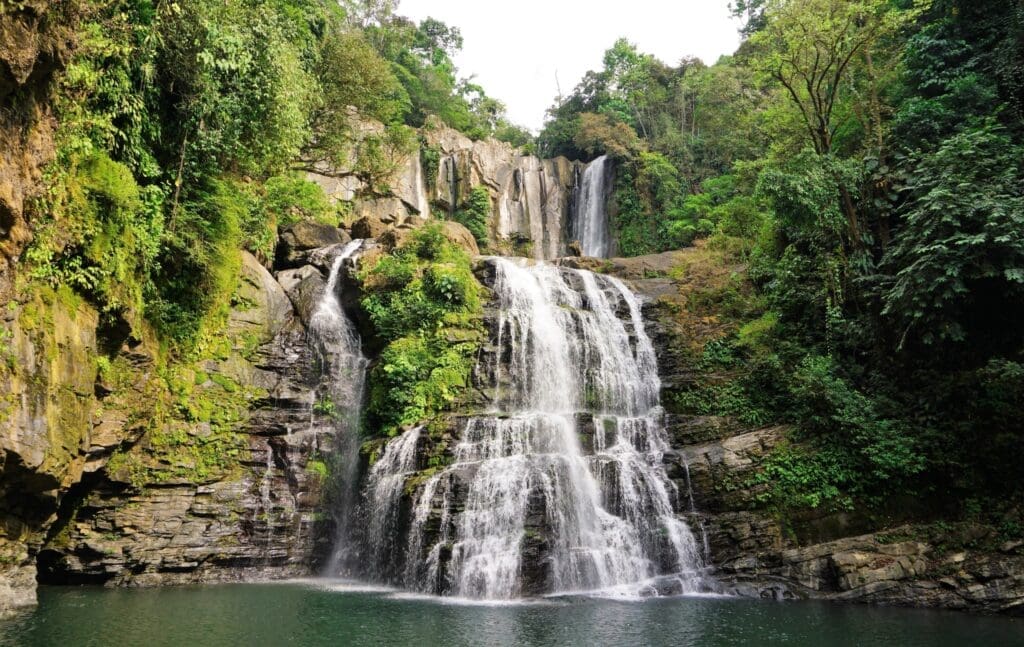
Time slows down as you cruise into sleepy Uvita, a backpacker town that clutches the sides of the Bahía Ballena on Costa Rica’s central Pacific coast. It’s got all the things you’d expect of a chilled beach escape – think miles and miles of coffee-colored sand running away to the north and south, strings of coastal jungles filled with monkeys, and a backing of rainforest-tufted hills carved out by waterfalls.
A couple of days here can take you from sweaty jungle treks to R&R on the coast to whale watching. Probably the most iconic sight is Punta Uvita. It’s a half-mile (900-meter) long headland that juts out of the town’s northern side to form the shape of a whale fin. That’s fitting, because Uvita is a popular place to catch a glimpse of humpbacks between December and April and then again between July and September.
Going inland, you can hike to the wonderful Cascada El Pavón, a waterfall that gurgles over granite ridges in the middle of the woods into a turquoise plunge pool. There’s also the Nauyaca Waterfalls, which are much larger, much more dramatic. Cap off the day with an unforgettable sunset show on the main Playa Chaman (also known as Playa La Colonia). Check out this Classic Costa Rica tour and customize it to include all the things you want to do and see.
15. Cahuita

Cahuita is kind of what Puerto Viejo de Talamanca was before the big-name surfers and the backpacker partiers came. About six miles (9.7 kilometers) north of its bigger brother on the Caribbean Coast of Costa Rica, the town is only a couple of streets across and a couple of streets wide. It’s made up of tin-roofed shacks and colorful homestays, which cluster between two long, scything bays; one of pure black sand, the other of Caribbean sugar white.
Surf is becoming more and more popular here, mainly because there’s a rare offering of beginner-friendly waves that work best in the winter months when the Pacific side of the country is smaller. Expect a handful of well-rated surf schools and surf camps to match.
Then there’s the special Cahuita National Park. Spread over large swathes of coral gardens out at sea and a small pocket of coastal jungle on the headland to the south of town, it’s a world for both hikers and snorkelers. Dive under to meet sea cucumbers and manta rays. Stay dry and you’ll wander paths that echo with the calls of howler monkeys.
16. Puerto Viejo
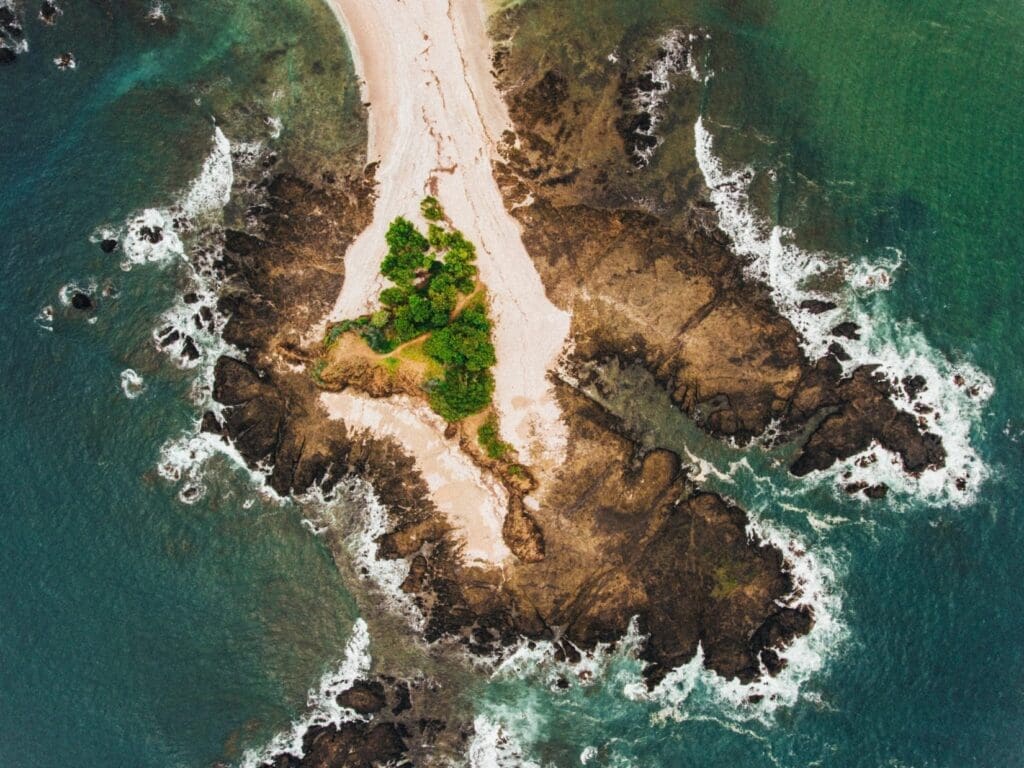
Little Puerto Viejo de Talamanca whisks you over to the Costa Rican Caribbean. It shows, too. The town here would look right at home somewhere on the Jamaican north coast. It’s filled with paint-peeling cantinas and ramshackle eateries where the scents of coconut curries twist and turn with the rhythms of reggaeton in the air. Oh, and there are buzzing bars that slosh with rum cocktails and cold beers, meaning you won’t be short on nightlife.
Once upon a time, Puerto Viejo was just an unknown fishing village. Then the surfers came. They were drawn by the promise of the thundering left-hand barrels that peel over the reefs of Salsa Brava, and the hollow beach peaks at Playa Cocles. Those are now two of the most legendary surf spots in Costa Rica as a whole, offering a place to score tubes in the dry season months between November and April, when the Pacific coast is usually a little less reliable.
Puerto Viejo isn’t just about waves, though. The town is perfectly located for launching expeditions into the Gandoca-Manzanillo Wildlife Refuge, a lush land of eyelash vipers and emerald parakeets. It’s also the home of the acclaimed Jaguar Rescue Center, where you can go to learn all about frontline conservation efforts in Costa Rica.
Check out our Costa Rica Adventure page to see how you can explore the best places to go in Costa Rica.
17. Osa Peninsula
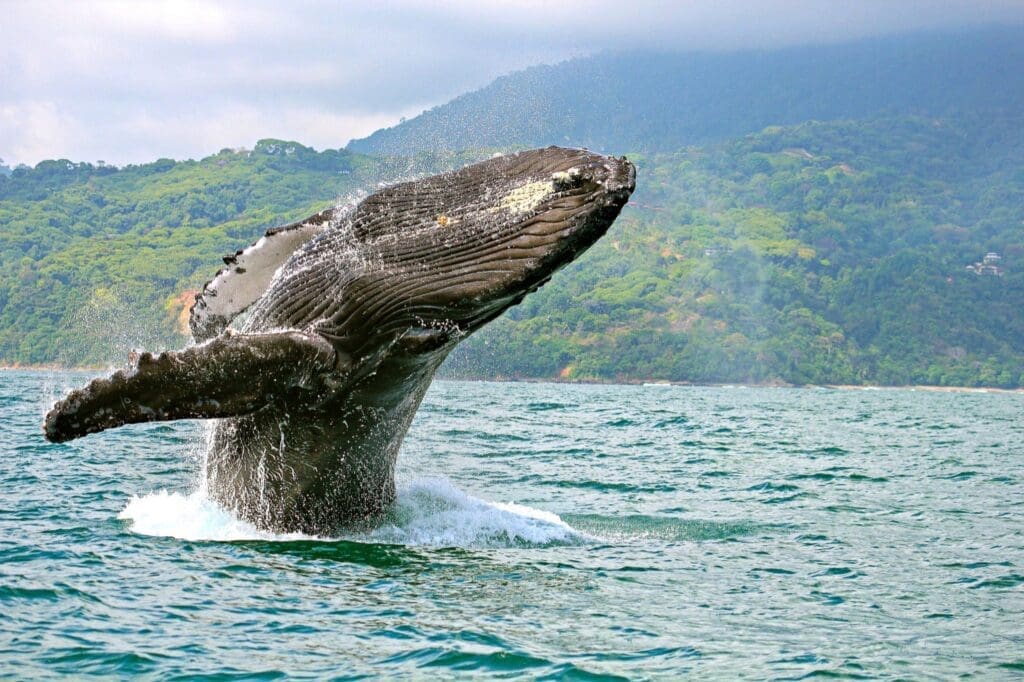
Come visit the most untouched, natural area of Costa Rica. The Osa Peninsula dips out from the southwestern side of Costa Rica like the flapping fin of a humpback whale. Incidentally, it’s pods of these majestic marine giants that make this such a famous destination. Whales can be spotted during December and April each year on their annual migrations. Head to the north end of Osa to take a boat trip in Drake Bay for one of the best ways to see these fascinating creatures.
But there’s also more than just mighty whales in these parts – as if you needed any more convincing! Hope over to Caño Island for one of the best spots for snorkeling and diving in Costa Rica. Plus, a large part of the Osa region is covered by the indelibly wild Corcovado National Park – a 164-square-mile (424-square-kilometer) stretch of primeval rainforest filled with tapirs, jaguars, and the world’s loudest monkeys – the howler monkeys. It’s an incredible place to hike and experience the sheer biodiversity of Costa Rica. Read more on Corcovado below.
The southern side of the Osa Peninsula is dotted with charming coastal towns that have become the province of surfers wanting to escape the crowds of Tamarindo. They used to be hard to reach but have since been linked up with the main highways running south from San José. Check out the likes of Playa Carate and Matapalo for serious beach vibes, but note that a 4X4 is still recommended if you’re going that far. Here are some other Top Attractions on the Osa Peninsula.
18. Corcovado
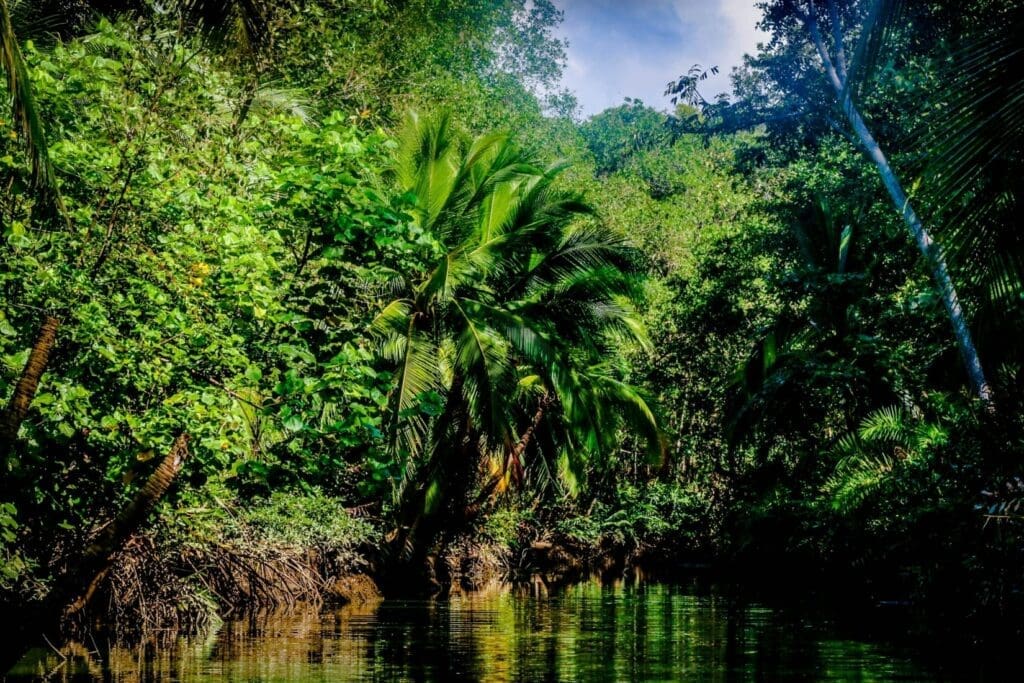
If you only have time to visit one national park in Costa Rica, there’s a good argument to make it the Corcovado National Park. Draped over large parts of the Osa Peninsula in the far south of the country, it was established to protect some of the last remaining old-growth wet forests on the Central American Pacific. Just in time, too – the loggers and the miners already had their eyes on the place!
Today, it’s an enticingly hard-to-reach part of the country. The best way is to arrive is by boat via Drake Bay or Puerto Jimenez. Then, get ready to hit the trails. There are a few that stand out. The Los Patos to Sirena trek is the longest, whisking you through lush cloud forests and gushing waterfalls. Budding botanists might prefer the 1.9-mile San Pedrillo Trail, a loop that delves into groves of huge purple heart and mahogany trees with ferns and orchids by the bucket load. However, Corcovado can also be a real Costa Rican safari, and wildlife spotting is probably best on the well-trafficked Sirena Trail, where coatis, pumas, wild pigs, and toucans can make an appearance.
The point where the Corcovado jungles tumble into the Pacific Ocean is jaw-dropping to put it lightly. There, you could take to the seas to do some whale watching (August-November) or channel your inner Robinson Crusoe on the black-tinged sands of forever-deserted Carate Beach. Either way, get ready for a land of mist-haloed coast peaks and wave-splattered shores.
19. Pavones
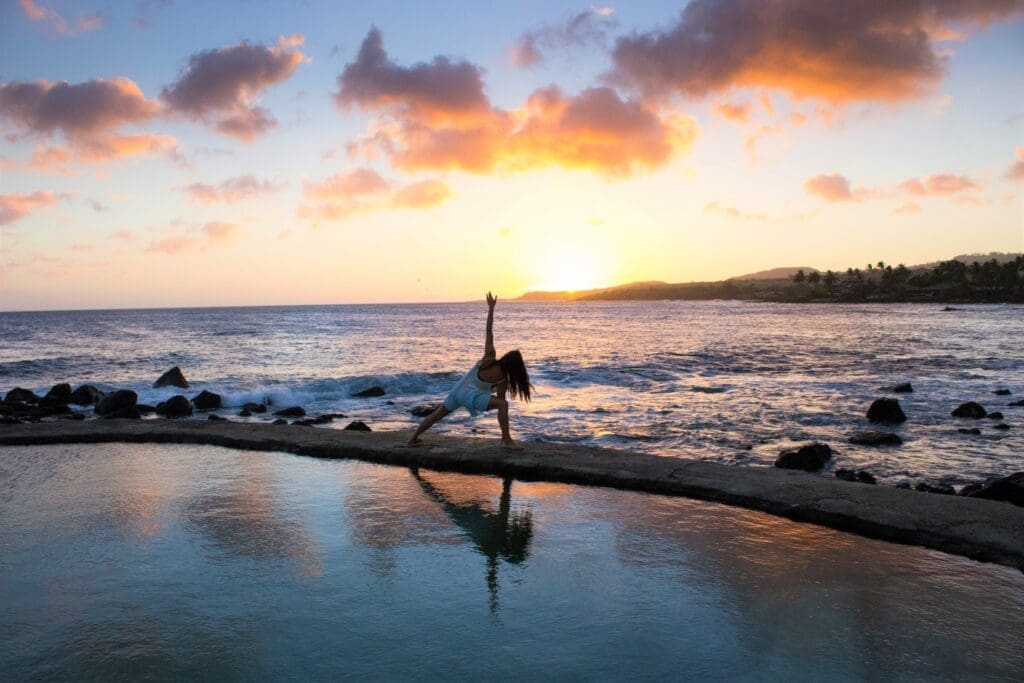
Lying in the southwestern corner of Costa Rica, you’ll find Pavones. While Tamarindo caters to the beginner surfers and Santa Teresa offers punchy waves for the intermediates, Pavones quietly continues to satisfy travelers with some of the country’s most epic left-hand waves. Pavones is considered by surf purists to be among the highest-quality point breaks on the whole planet. When it links up, you’re looking at rides of over half a mile (or over a kilometer – yep, 1,000-plus meters)! They begin on the outside of the Rio Claro and bend around Pavones’ black-sand beaches to the inside of the main bay.
Pavones is more than just a surf town, though. It’s starting to rise as a major ecotourism and yogi hotspot. The beaches are coal-tinged arcs of sand and stone that drop straight out of the jungles and mangroves. We’re talking really wild, undeveloped coastline that’s a picture of the old Costa Rica before the days of the many resorts you’ll find further north.
The town also happens to be a great pitstop on cross-continent land trips, since the Panamanian border is just seven miles (11.3 kilometers) to the south. Get a taste of Central America with stress-free planning by booking your Costa Rica Adventure with The Explorer’s Passage.
How to get to Costa Rica?
San José’s Juan Santamaría International Airport has long been the main gateway to Costa Rica. However, the Daniel Oduber Quirós International Airport in Liberia has risen as an alternative gateway in recent years, mainly because of its convenient proximity to the popular Pacific coast surf towns and beach resorts. Still, most people will travel into the capital first since it’s served by far the largest array of air connections coming from the United States, Europe, and South America alike.
You can also drive here if you’re up for an adventure. Costa Rica lies smack dab on the courses of the Pan-American Highway. That’s one seriously hefty undertaking, requiring something like 70 hours on the road from the USA-Mexico border. Oh, and said roads are rarely the five-lane highways you might be used to!
When’s the best time to visit Costa Rica?
There’s no real “best time” to visit Costa Rica. It all really depends on what you’re after. The locals divide the year into two seasons: The dry season and the wet season. The first runs roughly in line with North America’s wintertime, from December through to April. The second takes up the rest of the year, starting in May and ending around November.
True to its name, the dry season sees WAY less rainfall than its counterpart. Take Tamarindo – the cool, surf-washed town on the Nicoya Peninsula – as an example. There, precipitation ebbs to a mere millimeter of rain in January but soars to over 14 inches (358 millimeters) in the wettest month of September. Naturally, that makes the winter the peak time for beach lovers and sun seekers.
However, don’t write off the green season just because of the drizzle. Notice that it’s called the ‘green’ season – not, simply, the wet season. That’s because it’s when the jungles of Costa Rica burst into 10,000 shades of emerald. It’s high time for spotting all the weird and wonderful creatures of the forests, from those lazy sloths to the big-beaked toucans. On top of that, green season ushers in the best surf and the finest whale-watching over on the Pacific.
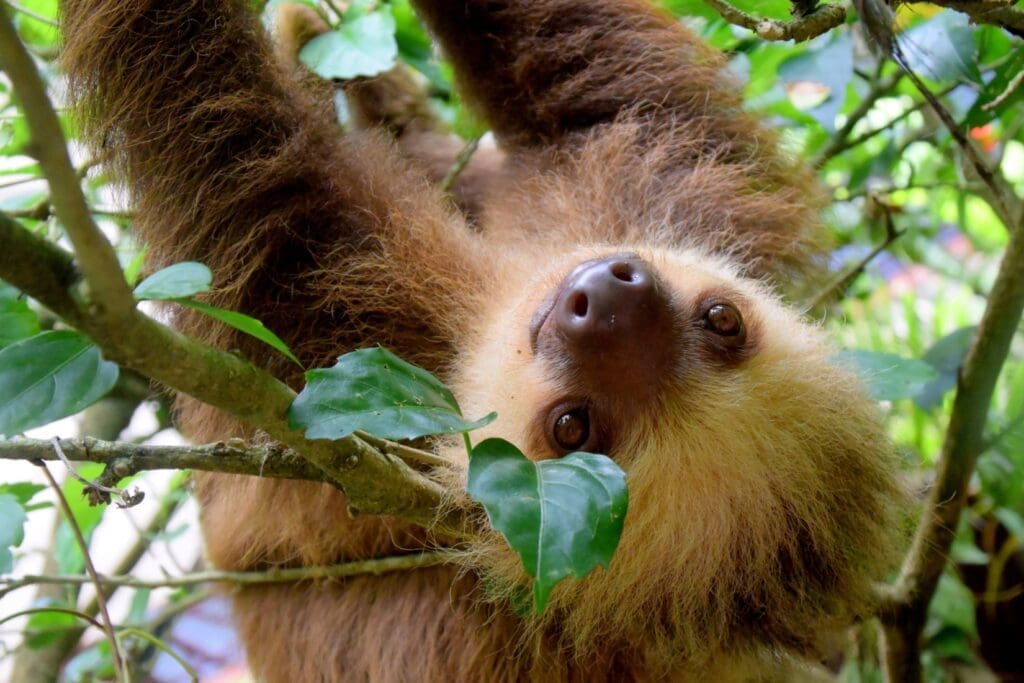
This guide runs through just 19 of the most enthralling places to visit in Costa Rica. There are many, many more, from smoke-belching volcanos hemmed in by coffee plantations to idyllic beach escapes where sloths patrol the shoreline.
We’ve got our own tailor-made Classic Costa Rica itinerary. It will whisk you through the famous national parks to see howler monkeys crying from above. It will drop you in broiling hot springs under the gaze of mighty mountains. And it will offer the chance to get on Costa Rica’s famous surf breaks. Or you can check out our other customizable vacation tours to destinations across Costa Rica.
And if you want to see more of the world with us, explore all the places you can go on our main Adventures Tour Page.
If you are interested to learn more about how we can take you to these extraordinary places, email us at info@explorerspassage.com.
I look forward to seeing you in Costa Rica!
Cheers,
Jeff
Jeff Bonaldi
Founder & CEO
The Explorer’s Passage
About Jeff Bonaldi
Jeff Bonaldi is the Founder and CEO of The Explorer’s Passage, a premier adventure travel company. His mission is to provide travelers with the opportunity to transform their lives and the planet through the power of adventure.
Learn more about Jeff’s story and his company HERE.
Share this amazing location!

